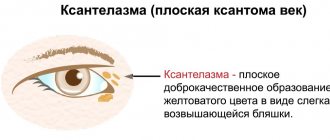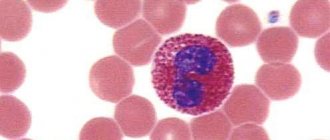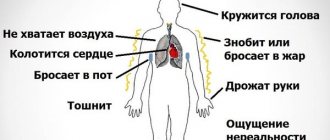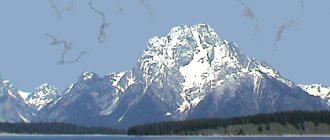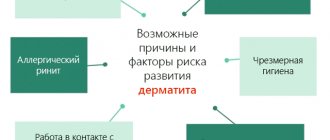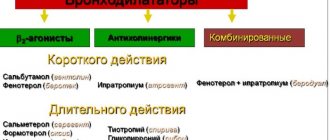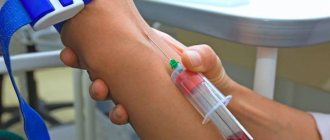Any rash on the skin should alert you. For example, a rash can occur during an enterovirus infection and go away quickly. Or it may be one of the symptoms of a deadly disease - meningitis. The presence of petechiae and purpura during infectious processes indicates the severity of the disease.
Petechiae appear on the skin as a result of capillary hemorrhages. And, if blood is found under the tissue in large areas, the process is called purpura.
Photo: petechiae on the skin
Purpura is a pathological formation that has a purplish-red color and does not change when pressed. Rashes less than 1-2 cm in diameter are petechiae.
General views
Petechiae are a special case of purpura and have a round shape. Spots of a red or purple hue are formed as red blood cells exit the vascular bed into the space located between the tissues. They do not rise above the skin and cannot be identified by palpation.
Photo: petechiae
Petechiae on the skin, photos of which are presented, can be one of the informative signs of processes such as blood diseases, systemic autoimmune and infectious diseases. This type of rash can also appear after physical trauma or excessive pressure (squeezing) of the skin. Rare causes of petechiae are coughing and vomiting (especially in young children). Capillary hemorrhages appear around the eyes.
Locations: arms, legs, torso, face, mucous membrane of the eyes or oral cavity. Occurs in all age groups.
The appearance of purpura is a response to changes occurring in the body. Very often the cause is an insufficient number of platelets and a violation of blood clotting processes.
The purpuric rash is most often localized in the lower extremities.
The occurrence of petechiae and purpura may be associated with the appearance of a bacterial, fungal or viral infection: the presence of cytomegalovirus, meningococcus, manifestations of infectious mononucleosis, scarlet fever, septic processes.
Are red dots on the body petechiae or angiomas?
Small crimson spots on the skin occur for various reasons, which are necessary to know about in order to successfully get rid of the cosmetic defect. Red dots are located on the body most often on the arms and legs. In some diseases, skin rashes become constant companions, and it is recommended to begin the fight against them by eliminating the cause of the appearance of red dots.
Petechiae is one of the manifestations of purpura
The formation of this type of rash is explained by tension during coughing, vomiting, severe crying, physical overexertion, and stress. Single red dots on the body are petechiae. Small and large spots are ecchymoses and bruises, respectively.
Hemorrhages often occur as a result of stagnation in the bloodstream, with inflammation of blood vessels (vasculitis). If small red dots on the body are petichiae, then they do not disappear when pressed with a finger, and do not lose their color when the skin is stretched. But the color of the dots may change over time from ruby to burgundy, purple and yellowish-cinnamon.
Red spots on the skin occur when red blood cells escape from the vessels into the space between cells and tissues.
Small red dots on the skin with a diameter of 1 to 3 mm usually do not cause pain or itching. Petechiae do not require special treatment; their spread can be stopped with the help of cold compresses and applying ice cubes. However, hemorrhages and spots often become the first symptoms of infections, allergic reactions, hypo- and avitamins.
Causes of pinpoint subcutaneous hemorrhages and treatment of the underlying disease:
- Hemorrhagic vasculitis - anticoagulants, immunosuppressants, corticosteroids, vasoconstrictors (rutin, Japanese Sophora tincture).
- Hypo- and vitamin deficiency K, C, P - taking vitamins, eating fresh fruits and vegetables, juices, nettle infusions, yarrow.
- The use of drugs "Warfarin", "Heparin", "Indomethacin" - dose reduction or discontinuation.
- Infections - antibiotic therapy, antihistamines, immunostimulants.
- Thrombocytopenia - hormonal drugs.
- Scleroderma - lidase, hyaluronic acid.
The most serious damage to blood vessels occurs with purpura fulminans. The mortality rate for young children from this disease reaches 92%.
One of the symptoms of purpura fulminans is red dots all over the body. They appear suddenly in children and spread quickly with pneumonia, meningococcal infection, rubella, and scarlet fever. The child's condition worsens, the temperature rises, and vomiting begins.
A variety of reasons for the appearance of red dots throughout the body
Angiomas are small bumps or ruby-colored spots on the skin with a diameter of 2 to 9 mm. These red dots on the body look like moles; they are vascular tumors in origin. Hormonal changes, namely excess estrogen, contribute to the growth of tumors. Therefore, spots appear during pregnancy, when taking birth control pills.
Capillary angioma looks like a ruby speck on the body and often itches. Other neoplasms from this group are knob-shaped, protrude above the skin, or resemble the outline of a spider.
Angiomas are benign neoplasms; such tumors are removed primarily for aesthetic reasons. Red dots on the body are treated with laser therapy and removed during a routine surgical operation.
After excision and healing of the wound, a small scar remains.
Another cause of ruby, crimson, and red rashes is liver and pancreas disease. The dots are grouped on the skin of the upper body. The size of the red spots is 0.5–3 mm.
With lupus erythematosus and arthritis, small red dots on the body itch and merge into spots and papules. Autoimmune diseases are dangerous because the substances and cells of one’s own body are perceived as foreign. Drug treatment is combined with diet and gentle physical activity.
When the rashes are on open areas of the body and are too noticeable, doctors offer laser removal, cryotherapy, and electrocoagulation.
Red dots appear after sunbathing in people with fair skin due to the expansion of small blood vessels under the influence of ultraviolet radiation. If the defects are small, you can hide them with the help of cosmetics. Red dots appear after tanning, to avoid this, you should take care from excess ultraviolet radiation, especially people with sensitive and fair skin.
It is necessary to use hygiene products and cosmetics in accordance with your skin type. Contrast showers, douches, baths with herbal infusions improve blood circulation. Vegetable oils and natural moisturizers nourish and restore the skin well.
Source: https://narosty.com/krasnyie-tochki-na-tele.html
Types of purpura
In medical practice, there are several types of this disease:
Thrombocytopenic purpura
Formed when the total number of platelets decreases. There is both an independent disease and a symptom of another process. It is detected mainly in girls under 14 years of age.
The mechanism of development is associated with changes in the properties of platelets during infectious processes or the use of a number of medications. The platelets travel to the spleen and are destroyed there. The result is thrombocytopenia.
Bruises and petechiae appear on the skin from the slightest blow. An accompanying symptom may be: bleeding from the nose, on the gums, from the uterus.
The rash can change its color depending on the stage of the pathological process and the period of limitation: from red to purple, green or yellow (within 10 days after the first spot).
Thrombocytopenic purpura in children can become chronic (recurrent bleeding). The main type of therapy is resection of the spleen.
Thrombotic thrombocytopenic purpura
Caused by blood clots from certain medications, vaccinations, cancer, or meningococcal infection.
Main symptom complex:
- formation of petechiae and bruises;
- pain in the abdomen and head;
- vomiting and nausea;
- vision functions are impaired;
- mental and nervous system disorders.
With this disease, the vessels of the brain, kidneys, and liver are affected. The consequence of these processes is death.
Henoch-Schönlein purpura
Photo: Henoch-Schönlein purpura
An infectious process caused by viruses or bacteria, the use of certain medications can cause inflammatory processes in the blood vessels. The first symptoms will be:
- finely spotted rashes;
- the temperature rises to low-grade levels;
- painful sensations in the joints, abdominal area;
- diarrhea.
Toxic purpura
It develops when taking medications that have a pathological effect on the blood: they greatly dilute it or, on the contrary, thicken it.
Allergic purpura
Occurs when allergies to food, medications, or chemicals occur.
How to treat subcutaneous hemorrhages?
Petechiae (petechial rash) can appear on the skin of people of all ages. Since these small red dots do not hurt or become inflamed, people may perceive them as not dangerous. In most cases, this is true, because petechiae can go away over time without leaving a trace.
However, this kind of specific rash can be an alarming reason that requires diagnostic testing, and in certain cases even calling an ambulance. It is worth finding out when hemorrhage under the skin is a minor reaction of the body, and in what cases a hematoma is a sign of a serious illness.
Petechiae - small hemorrhages under the skin
Petechial rash is a type of hemorrhage that occurs due to damage to capillaries, the smallest vessels.
A small amount of blood spreads under the skin, resulting in the formation of a round spot no larger than 2 millimeters in size. The patient is not bothered by such a rash.
Moreover, sometimes petechiae appear for no apparent reason and in small quantities, so a person may not even notice their presence on the skin.
Distinctive feature
A characteristic feature of such hemorrhages is that they do not disappear with pressure. When, when you press on the rash, the rushing blood begins to move through the vessel, this means that the redness is caused by an inflammatory process, and not by rupture of the capillaries. If it is a petechial rash, it will not move, will not turn pale, but will remain under the skin.
Such hematomas do not hurt or become inflamed; these flat formations can remain on the body for a long time, even if the factor that provoked them has long been eliminated.
They may change color over time from scarlet to red and then to brown, but they will not change shape or size. But the fact that the pathological process is progressing is indicated by the appearance of massive bruises or new red dots.
They appear on the body at the point of pressure, impact, and if there is strong tension, then on the face.
Category of people susceptible to subcutaneous hemorrhages
Rupture of capillaries occurs most often in older people, since with age the walls of blood vessels lose their elasticity, so the appearance of small amounts of skin hemorrhages is a natural physiological process. During drug treatment, damage to the walls of blood vessels may occur. Petechiae are sometimes seen in people who take the following types of drugs:
- penicillin antibiotics;
- “Heparin”;
- "Warfarin";
- non-steroidal anti-inflammatory drugs;
- "Atropine";
- "Indomethacin".
Chemotherapy and radiation therapy can also cause pinpoint subcutaneous hemorrhages on the body. Often the presence of petechiae can be observed in drug addicted patients.
Provoking factors
The causes of local subcutaneous hemorrhage on the arms, legs and other parts of the body can be:
- soft tissue damage due to impact;
- rubbing;
- In children, diaper rash may appear;
- in adults – from uncomfortable shoes or tight clothing;
- squeezing the skin, for example, if a tourniquet or tight bandage was applied.
Against the background of strong tension, blood pressure increases, the walls of the capillaries may not withstand this. For example, with severe coughing, screaming or crying. Along with blood pressure, the appearance of a petechial rash can be affected by severe stress or strenuous exercise.
Diseases as a cause
In the presence of a serious disease, the walls of blood vessels weaken, they are often damaged, and most importantly, bruises of various sizes occur. Most often this applies to diseases that are associated with changes in blood composition, for example, leukemia, aplastic anemia.
Thrombocytopenia is a disease associated with a decrease in platelets, which are responsible for blood clotting. If they are deficient, any wounds will take longer to heal, and in the worst case, bleeding will generally be impossible to stop. Therefore, one of the first symptoms of this disease is the appearance of any types of subcutaneous hemorrhages.
Diseases in which blood clots poorly can also cause petechiae. In autoimmune diseases, the vascular system also suffers, since the functioning of the immune system is disrupted, in which it perceives the body's cells as foreign and begins to attack them. Against the background of this pathology, inflammation develops, which destroys the walls of blood vessels.
Other pathologies in which hemorrhages occur:
Also, the condition of the blood vessels can be affected by an infectious disease, which leads to capillary ruptures. Petechiae are often observed against the background of diseases such as:
- scarlet fever;
- endocarditis;
- enterovirus infection;
- angina;
- mononucleosis.
Deficiency of vitamins K and ascorbic acid can lead to subcutaneous bruising.
Diagnostics
The doctor can make a preliminary diagnosis based on the data he received during a conversation with the patient and a general examination. To confirm the suspected disease, he prescribes tests and uses instrumental methods. Only after diagnosis the doctor will tell you how to treat subcutaneous hemorrhage.
Standard tests include urine and blood tests. Instrumental diagnostics is aimed at identifying the initial pathology. The patient is referred for:
- Ultrasound;
- electrocardiography;
- CT;
- MRI;
- x-ray.
He also needs to consult a dermatovenerologist.
Therapeutic measures
Treatment of subcutaneous hemorrhage on the arms, legs and other parts of the body is aimed at reducing bleeding, stopping all pathogenesis, aimed at eliminating the etiological factor and suppressing symptoms.
If there has been a mechanical impact, it is necessary to use a cold compress, it will eliminate pain and reduce bleeding, this is due to vasospasm, which prevents the subsequent growth of rashes.
If an infection develops, it is necessary to undergo treatment with broad-spectrum antibiotics. In each case, drugs are selected individually.
Steroidal and non-steroidal medications are used to relieve inflammation.
To raise and stabilize the immune system, a complex of biologically active substances is prescribed, which consist of nicotinic acid, tocopherol, retinol and vitamin C.
With correct diagnosis and timely treatment, the prognosis will be favorable. Complications will depend on the severity of the disease and the type of pathology, because the consequences can vary from massive blood loss to death.
Source: https://FB.ru/article/414455/chem-lechit-podkojnyie-krovoizliyaniya
Diseases and petechiae
The rash happens:
- Primary.
Goes away on its own - Secondary.
Characterized by the penetration of blood clots into nearby tissues. Surgery is required to treat them
There is a relationship between the main symptoms, visual examination of the rash and the disease. They are discussed in the table:
| Disease | Manifestation |
| Meningitis | The rash appears in the first 24 hours. It has the appearance of an irregular star and a pale tint. As the disease develops, it tends to merge and necrosis. Main localization: thighs, lower legs, buttocks, feet |
| Staphylococcal infection | Gram-positive cocci are found in purulent petechiae. During the septic process, the vessel wall becomes permeable under the influence of pathogenic toxins. Petechiae of a pinpoint nature appear on the skin, oral mucosa, and sclera. |
| Autoimmune diseases, vasculitis | At the initial stage, a rash appears on the upper and lower extremities. After 2-4 days, petechiae appear in all areas of the body and are accompanied by intoxication. After a couple of days, the rash goes away, areas of pigmentation remain, and the skin begins to peel off. With hemorrhagic vasculitis, petechiae, joint and abdominal pain appear |
| Entorovirus infection | Symptoms: fever, muscle pain, sore throat caused by the herpes virus, increased body temperature. They subside at the first appearance of characteristic rashes. The rash appears in the first 24 hours of the disease, after two days it disappears without a trace |
| Schamberg's disease | Men are most often affected. Petechiae are located symmetrically on the thighs and legs. At the beginning of the disease, the rash has a brown or brownish tint, but later becomes lighter. The disease is benign |
| Gonorrhea | Petechiae are located on the extremities furthest from the center of the body, above the large joints. Accompanied by characteristic symptoms: the urinary and reproductive systems, anorectal area, pharynx suffer |
Bloody rash: what do petechiae mean?
Petechiae (or petechial rash) appear on the skin at any age. These small red dots do not hurt or become inflamed, so they are often perceived by people as harmless. In a significant percentage of cases, this is true - the petechiae disappear over time, leaving no trace.
And yet, such a specific rash may be a reason to take your health seriously and undergo diagnostics, and in some cases, urgently call an ambulance.
MedAboutMe will tell you when red spots are just a minor reaction, and when they are a sign of a fatal disease.
Petechiae - small hemorrhages
Petechial rash is one of the types of hemorrhages that occur due to damage to the smallest vessels, capillaries.
A small amount of blood spreads under the skin, forming a round spot no larger than 2 mm in size. This rash does not bother the patient in any way.
Moreover, if petechiae are formed in small quantities and are not accompanied by other symptoms, a person may not notice their presence on the skin.
A characteristic feature of petechiae that helps distinguish them from other types of rashes is that they do not disappear with pressure. If the redness is caused by an inflammatory process, but does not lead to rupture of the capillaries, the rushing blood will flow through the vessel, you just have to press on the rash with your finger. The hemorrhage will still remain under the skin, will not move and will not turn pale.
Petechiae do not become inflamed or painful; they are flat formations that can remain for quite a long time. Even after the factor that provoked them has long been eliminated.
Over time, they can change color (from scarlet to red, and then to brown), but do not increase in size or change in shape.
But the progression of the pathological process is indicated by the appearance of new red dots, or more massive bruises.
Trauma and other physiological causes
The first and most obvious cause of capillary rupture is trauma. Moreover, we are talking about a large list of damages. Petechiae can result from:
Impact with soft tissue damage. Skin chafing. In infants, the rash can appear from diapers, in adults - from uncomfortable clothing. Skin squeezing. For example, at the site where a tourniquet or tight bandage is applied.
The walls of the capillaries may not withstand the increase in blood pressure that occurs against the background of severe stress. For example, with intense coughing, crying, even screaming.
Severe stress or weightlifting can also affect blood pressure. A characteristic feature in cases of injury and overexertion is the local nature of the petechial rash.
Red dots appear at the site of pressure, impact, etc., and with severe tension - on the face.
With age, the walls of blood vessels become less elastic, and capillary ruptures occur more often. Therefore, the formation of a small number of petechiae in old age is a natural physiological process.
Damage to the walls of small vessels can occur during treatment with various medications. Petechiae form in people taking the following medications:
Penicillin antibiotics. Warfarin, heparin. NSAIDs (non-steroidal anti-inflammatory drugs). Atropine. Indomethacin.
Also, subcutaneous hemorrhages can result from radiation and chemotherapy. The rash is often observed in drug addicts.
Diseases that cause petechiae
Weak walls of blood vessels, their frequent damage, and most importantly, the presence of bruises of various sizes can indicate more serious problems. First of all, we are talking about diseases associated with changes in blood composition.
In particular, bruising occurs in various types of leukemia and aplastic anemia - diseases in which the bone marrow produces an insufficient amount of blood components.
Thrombocytopenia is characterized by a low content of platelets, the cells responsible for blood clotting. If they are deficient, any wounds will take longer to heal, and in the worst cases, it is impossible to stop the bleeding at all.
Therefore, with this disease, the formation of any types of hemorrhages is one of the first symptoms. Petechiae also occur in other diseases associated with poor blood clotting.
The vascular system suffers from autoimmune diseases - disorders of the immune system, in which it begins to perceive the body's cells as foreign and attack them. Against the background of such pathologies, inflammation often develops, destroying the walls of blood vessels - vasculitis. Petechiae occur when:
Systemic lupus erythematosus. Spondyloarthritis. Scleroderma. Hemorrhagic vasculitis.
Infectious diseases can affect the condition of blood vessels and lead to ruptures of the most delicate of them - capillaries. Therefore, petechiae often occur against the background of such diseases:
Angina. Scarlet fever. Cytomagalovirus infection. Enterovirus infection. Mononucleosis. Endocarditis.
Another cause of weak capillaries can be hypovitaminosis. First of all, subcutaneous bruising is caused by a deficiency of vitamins K and C. Petechiae occur in small quantities, often against the background of changes in diet or after an illness.
Petechiae in life-threatening conditions
Unfortunately, small red dots on the skin can also indicate severe, life-threatening conditions. First of all, we are talking about a complication of a bacterial infection - the development of sepsis. It occurs when bacteria and their toxins enter the blood.
Against this background, various vascular damage occurs, and the microorganisms themselves spread throughout the body and lead to systemic damage. Without proper treatment, the patient goes into shock and develops acute multiple organ failure.
Doctors include Staphylococcus aureus and streptococci as pathogens that most often lead to sepsis.
Another dangerous bacterium, infection of which can be accompanied by petechiae, is meningococcus. If meningococcal infection occurs in a mild form, bruising does not form on the skin. But if the bacterium enters the blood, the most severe form of the disease occurs - meningococcemia.
Under the influence of the immune system, microorganisms in the blood are destroyed, a toxin is released, which causes severe harm to blood vessels, actively damaging their walls. This development of the disease is typical for children, and its distinctive feature is rapid development and progression.
And the formation of a characteristic rash is one of the most accurate symptoms. Small hemorrhages appear throughout the body, their number increases before our eyes, and new ones are larger in size and more complex in shape (resembling stars). In some areas they may merge into large spots.
This diagnosis has a very high mortality rate, so the sick child must be urgently hospitalized.
Symptoms
When petechiae and purpura form on the skin, the following symptoms may be observed:
- the formation of bubbles with escaping liquid, the formation of crusts;
- itching;
- pain;
- formation of pustules;
- rashes can appear quickly and disappear just as quickly;
- peeling of the skin;
- edema formation.
Common symptoms include:
- loss of appetite;
- symptoms of respiratory disease;
- increased excitability and irritability (more often in childhood);
- painful sensations in the joints;
- redness of the mucous membrane of the eyes;
- runny nose and sneezing.
Rashes that are accompanied by the following symptoms require immediate medical attention:
- loss of consciousness;
- increase in body temperature to 38.5˚C and above;
- any type of bleeding;
- tachycardia;
- respiratory failure;
- symptoms of meningitis;
- an allergic reaction that may be accompanied by soft tissue swelling.
It should be remembered that neglecting your health can cost your life!
Petechiae on the skin: causes and photos of the rash, symptoms and treatment in adults – Chest pain
Formations on the skin of children and adults are a common phenomenon that requires considerable effort to eliminate. There are different types of formations.
Some are localized on the head and face, others descend lower on the body and affect the entire torso, while others do not appear at all, but can be transmitted from mother to child in a vertical manner. One of the varieties of such formations is petechiae on the skin .
Photos will be reviewed in our material. With a competent approach to therapy, you can begin to eliminate the disease in a timely manner and get impressive results.
What is petechiae?
Petechiae are visible skin formations that appear in the process of rupture of blood vessels. They are a consequence of the leakage of blood fluid under the skin surface or into the mucous membrane area. Local damage to the layer under the skin occurs, since the diametrical indicators of these phenomena do not exceed 1-2 mm.
However, the manifestation of petechiae occurs immediately after penetration of the lesion, and they affect the skin in large numbers, covering an impressive area of the skin or mucous membrane. The rashes are flat and do not lose their color characteristics, even if you press on them.
Such manifestations can occur anywhere - in any area of the body, including a rash on the face, torso, limbs, mouth, and scalp.
Causes of petechiae on the skin with photos
There are several generating factors in terms of the formation of petechiae. The main reasons for the formation will be discussed below.
- Capillary traumatic phenomena and damage. As a result of this lesion, rupture of bodies and particles is observed, blood flows under the surface of the skin. In children, due to the weakness and underdevelopment of the body, the phenomenon can manifest itself during a fall, the same applies to people with fragile skin. In adults, a more severe blow will be required.
- A deficiency of vitamin K leads to the occurrence of these phenomena. The fact is that failure to comply with the subtleties of caring for the baby and lack of healthy nutrition can cause childhood scurvy, represented by scattered skin hemorrhage and damage to the oral mucosa.
- If a child or adult suffers significantly from coughing attacks and similar phenomena, formations can manifest themselves in the mucous membranes of the throat, as well as on the face.
- One of the side effects responsible for the occurrence of affected areas may be the use of acetylsalicylic acid, used to eliminate respiratory and viral diseases, including influenza.
- Often, a rash appears as a result of treatment for varicose veins, so therapy is aimed not only at eliminating the consequences in the form of unsightly spots, but also at the use of drugs that thin the blood.
- If the patient experiences frequent bouts of vomiting, the rash forms in the upper chest area and can also be observed on the face, neck and other parts of the body.
- Regular or constant wearing of tight clothing may lead to the formation of petechiae on the skin anywhere. The situation can be eliminated by eliminating the object in close contact with the skin.
There are quite a lot of reasons for the formation of phenomena, so the therapeutic complex consists of combating not only the consequences, but also the primary sources of the disease.
Pathological causes of the formation of the disease
There are situations when petechiae on the skin (photos can be seen in the article) appear as separate symptoms against the background of other manifestations and diseases. In this case, efforts will need to be made not only to eliminate the consequences, but also to remove the causes of the disease.
- Thrombocytopenia is a disease caused by impaired blood clotting. If the skin suffers minor damage, you can become a victim of serious bleeding. The disease occurs with constant complications in soft tissue areas.
- Lupus erythematosus is a disease accompanied by a serious blood disorder. During such failures, the DNA structure changes through antibodies. In this situation, petechiae can act as signs of a serious autoimmune process.
- Diseases that promote the destruction of connective tissue, which can provoke sudden changes in temperature. Due to this phenomenon, capillaries burst, and a rash may appear on the body, face, and limbs.
- Abscess and sepsis are ailments represented by an infected blood process, which can lead to the formation of a rash. In this case, therapy can be prescribed by several specialists at the same time.
- Gonococci and staphylococci are diseases that are responsible for processes affecting blood circulation and occur against the background of diseases in which a rash forms in the extremities. In the second case, a purulent rash appears as a sign of the disease; sometimes it can degenerate into gangrene (in the absence of timely qualified assistance from doctors).
Timely receipt of help from competent doctors in case of pathological processes guarantees a quick recovery.
After which petechiae occur
A rash in a child and an adult can occur against the background of mechanical damage, shock, vitamin deficiency, or the use of certain drugs in unhealthy quantities. Also, formations appear against the background of previous blood and skin diseases, purulent inflammatory and infectious processes.
Features of the manifestation of the disease in children and adults can vary significantly.
Petechiae photo on the skin of a child and an adult
Petechiae on the skin, photos of which can demonstrate their appearance and features of manifestation, are represented by dermatological formations. Sometimes they can be confused with other phenomena - allergies, sepsis, roseola, urticaria, pustular lesions. Therefore, it is necessary to take into account the main features of these formations.
- When squeezed, the spots have absolutely no reaction, that is, if you press your finger on the location of the rash, nothing will happen. The affected area will not lose its primary color and will not be able to disappear.
- In rare cases, suppuration of the rash under the skin may occur, especially if the process is influenced by infection. But this happens only in rare cases. In addition, caps and bubbles, as well as various crusts, do not form above the surface of petechiae.
- Against the background of the development of formations, itching does not occur; skin irritability (excessive) can be observed in exceptional situations, when the stage of the disease is too advanced, or the phenomenon occurs against the background of serious diseases.
Rash in adults
It manifests itself almost equally in children, but in the second category of the population it occurs more often due to the delicate and fragile skin of young children.
Petechiae on a child's face
Petechiae on the skin, photos of which are presented in the article, can appear on the face of children. Often this phenomenon occurs due to the curiosity of children and their desire to play active games and hit blunt objects.
The formations themselves do not cause threats, but they spoil the appearance of the baby and can become serious factors in reducing self-esteem in adulthood if treatment is not started in a timely manner and the formation of new phenomena is not prevented.
Formations on the facial skin in children can also appear due to other ailments. For example, pathogens include infections and other phenomena associated with problems in the functioning of the immune system, so you should not neglect the detected rash.
In infancy, a rash that appears can cause the child to have insufficient hygiene. If effective decisions are not made, the rash will spread and become an infection, which will be much more difficult to cope with.
Petechiae on the palate of a child photo
If a rash on the arms or a rash on the legs has a relatively clear origin (falls and injuries, mechanical damage, vitamin deficiency, insufficient hygiene requirements), then there are quite a few reasons for the formation of the disease on the palate. Usually, children develop petechiae on the palate if they abuse solid foods and eat a lot of dry buns, vegetables, and fruits. To prevent this phenomenon, it is necessary to review the child’s diet and include only soft foods in it.
Another reason why petechiae form on the palate in children is that when they cough, the formations affect the mucous membrane of the throat, but with significant phenomena they spread to the palate.
In this regard, the child may feel discomfort.
The situation is aggravated by the fact that in certain situations the rash, a photo of which can be seen in the article, does not manifest itself in any way, and parents have no idea about the existence of the phenomenon.
Petechiae on the legs photo causes in adults and children
There are many reasons for the appearance of petechiae on the legs, since these can be natural phenomena, mechanical damage and pathological processes. In children, they appear due to falls during active games or against the background of serious illnesses.
Also, insufficient hygiene leads to the spread of the rash to the butt, legs and stomach. In adults, the cause may also lie in a fall or pathology. Single petechiae can go away on their own, so there is no need to sound the alarm too much, however, in case of severe processes and phenomena, medical intervention will be required.
Petechiae treatment with folk remedies
If petechiae have formed, the main task is to establish the cause of their formation and its elimination. Finding the cause is quite simple: remember if there has been any mechanical damage to the skin in the near future, then analyze the medications you are taking, review your own diet and start diagnosing pathologies if the cause has not yet been identified.
What to do if petechiae form
- The first action is to contact a specialist, especially if formations appear on children’s skin without any special reasons or provoking factors. Which doctor treats petechiae on the skin depends on the conditions in which they arose.
- Next comes the treatment of the phenomenon that caused the formation of petechiae. The process is aimed at taking a certain course of medications and undergoing appropriate therapy, but only a doctor can provide you with effective help.
- Petechiae appear in older people due to age-related changes in the blood and skin. Therefore, it is necessary to strictly take care of yourself and prevent any falls and unpleasant situations associated with mechanical damage.
- Wait until the petechiae disappear. If, during the presence of the disease, petechiae disappeared and appeared again, then with its treatment the problems will not bother you again.
Source: https://oblivskaya-crb.ru/bolezni-serdtsa/petehii-na-kozhe-prichiny-i-foto-sypi-simptomy-i-lechenie-u-vzroslyh.html
Diagnostics
If petechiae or purpura appear on the skin, you should consult a hematologist. He will conduct an external examination, collect an anamnesis of the disease and prescribe additional laboratory diagnostic methods. This will help establish the correct diagnosis and prescribe adequate treatment.
During an external examination, it is important to pay attention to the location of the rash. Based on its location, a preliminary diagnosis can be made.
The main diagnostic methods include a general blood test (thrombocytopenia, ESR/CRP, and leukocyte levels are most likely increased).
Additional methods include:
- a set of tests to assess liver function;
- blood test for urea levels, creatinine, electrolytes;
- study of coagulation indicators using a coagulogram;
- electrophoresis of blood plasma proteins to identify paraproteins.
Auxiliary diagnostic methods:
- autoimmune tests;
- additional diagnostics during hospitalization (skin and bone marrow biopsy).
Rashes that arose spontaneously and went away on their own are not accompanied by any clinical symptoms and do not require special therapy. But, it is still necessary to undergo a diagnostic examination to identify hidden foci of internal bleeding.
Red dots on the skin
Red dots on the skin - what are they? If they appear, should you worry? It all depends on the origin of the spots. In some cases, these are benign formations that do not pose a threat to health.
In others, it is a sign of a disease, perhaps a very serious one. Rashes can be triggered by: stress, allergies, infection, mechanical damage, insect bites and other factors.
Let's look at what red dots are and why they form.
Capillary hemorrhages
Blood spots on the skin (petechiae) occur when subcutaneous capillaries rupture. Blood, in small quantities, leaves its channel and small specks of rich red color form on the body. They are flat, not detectable on palpation, reaching 1-2 mm in diameter.
Red dots due to subcutaneous hemorrhage
Petechiae can appear for a number of reasons:
- after mechanical impact on the skin - shaving, hair removal, strong impact;
- with severe coughing or vomiting;
- when using antiplatelet agents - medications that prevent the formation of blood clots;
- with significant hypovitaminosis of vitamins K and C, the lack of which leads to massive damage to the capillaries;
- in women after childbirth, because the birth of a child is a strong physical activity;
- in the presence of serious diseases of the liver, gastrointestinal tract, pancreas;
- with thrombocytopenia - a low level of platelets in the blood. Subsequently, large hematomas (bruises) form at the site of pinpoint hemorrhages;
- for infectious and autoimmune diseases - lupus erythematosus, rheumatoid arthritis, periarteritis nodosa, smallpox, typhoid fever, purpura, septicemia.
Red dots under the skin caused by mechanical stress will go away on their own within a few days. Pathological formations require consultation with a doctor.
If small red dots similar to moles appear on the body, these may be simple (capillary) angiomas. They are benign tumors of overgrown capillaries, arterial and venous small vessels. They are also called hemangiomas. Arterial angiomas have a bright red color, while venous angiomas have a bluish-purple hue.
Simple angioma
Hemangiomas can be single or multiple. Diagnosis of a vascular formation is simple: when pressed, it turns pale, when released, it fills with blood again, returning its color. Capillary angioma can be flat, slightly convex, or lumpy.
Such formations often occur in newborns, especially girls. Usually, by 6-7 years they disappear. Separately, senile angiomas are distinguished. They begin to appear in men and women after the age of 20, increasing in number as they get older. By the age of 60-70, the skin can become covered with many angiomas - the so-called red moles.
Senile angioma
If the education does not cause discomfort, there is no need to worry. If there is a risk of injury, it is better to remove the angioma in a cosmetic clinic. In some cases, a benign tumor can develop into a malignant one. Although there is no need to panic, if the angioma grows rapidly and increases in size, it is not recommended to postpone a visit to the doctor.
Red dots for liver diseases
Pinpoint rashes can signal serious liver problems. In these cases, two types of elements are distinguished:
- Hepatic spider veins.
- Hepatic purpura.
Spider veins look like red dots with branches resembling spider legs (see photo below). As a rule, the stars are located in large clusters in the back or abdomen. The spots have a slight convexity. The diameter of each individual element is up to 1 mm, but when combined into a group, the stars cover a large part of the body.
Liver stars
Hepatic purpura is petechiae or capillary effusions of blood. Their size varies from small red dots to large, palm-sized, pulsating spots called ecchymoses. Purpura is often accompanied by uterine and nasal bleeding.
Hepatic purpura
Rashes of this kind, especially large ones, are observed with viral hepatitis and cirrhosis of the liver. To get rid of red dots, it is necessary to treat the underlying disease.
Multiple red dots in viral and autoimmune diseases
Some diseases are accompanied by multiple skin rashes. Small red dots may appear in adults and children with pathologies such as:
- Allergic dermatitis is the body's reaction to allergens. Most often, the rash affects the skin on the head, face, arms and chest. Patients experience severe itching, swelling and peeling of the skin can be observed.
Manifestations of allergic dermatitis
- Follicular keratosis . It often occurs in boys and girls during puberty, as well as in pregnant women. Red rashes form in the area of the hair follicles. This phenomenon is popularly called “crow’s feet.” Another name for the disease is lichen pilaris. Most often, the rash is localized on the stomach, back and arms, less often on the face. Keratosis pilaris is not dangerous to others and is considered more as a cosmetic defect. The pathogenesis of the disease is not fully understood. Doctors suggest that the predisposition to keratosis is inherited.
Red dots on the skin due to keratosis pilaris
- Rosacea . Small red dots cover the face, neck and chest area. Over time, the rash may increase in size. The disease is accompanied by hyperemia, peeling and swelling of the skin in the affected areas.
Rosacea on the face
- Rubella . This viral disease appears as a red, dotted rash. Sometimes there is muscle weakness, headaches and slight itching. The rashes are most often localized on the back, arms, legs, and buttocks. Rubella is transmitted by airborne droplets, the incubation period lasts 10-20 days.
Rubella rash
- Scarlet fever . The causative agent of the disease is group A streptococcus. Scarlet fever most often occurs in children, the incubation period is 5 days. The disease is characterized by an acute onset. Small red dots in the plural appear along with general malaise and headache. It is rare to observe the formation of vesicles with serous fluid. After 2-3 days, symptoms may completely disappear.
Scarlet fever rash
- Chicken pox . A viral disease, the main symptoms of which are a sharp increase in temperature and the formation of small red blisters filled with clear liquid. As the pathological process develops, the rashes spread throughout the body and increase in size to 2-5 mm. Within 1-2 weeks, the blisters burst and become crusty.
Chickenpox rash
- Lupus erythematosus . The rash is localized on the cheekbones and bridge of the nose. It has a specific form called “butterfly syndrome”. The rash also spreads to the back, chest and arms. There are several types of rash for lupus erythematosus, including edematous, with signs of red pimples.
Facial skin lesions due to lupus erythematosus
- Dermatomyositis is a systemic disease that affects the skin and muscles. One of the first signs of pathology is an erythematous rash from red to purple. Clusters of dots can be observed on the cheeks, upper eyelids, décolleté and in the joint area.
Symptoms of dermatomyositis
Red dots on the skin can be a sign of serious pathologies such as leukemia or meningitis. Therefore, if a rash of unknown origin occurs, you need to visit a therapist or other specialist.
Treatment of purpura
Treatment must be started as early as possible, since in 30% of cases the disease can be fatal.
The main methods of treatment depending on the cause of the disease:
| Cause of petechiae | Treatment |
| Injury | Cold compress |
| Caused by an infectious process | Antibiotics, antiviral and immunostimulating drugs, detoxification of the whole body |
| Allergic origin of rashes | Elimination of allergen, desensitization of the body, antihistamines |
| Autoimmune pathological processes | Desensitizing and corticosteroid drugs, drugs that affect the compaction of the vascular wall |
General restorative therapy:
- vitamin preparations of groups K, P, C;
- blood transfusion, red blood cell transfusion;
- liver extract;
- globulin injections.
The main methods of treating purpura include:
- resection of the spleen for thrombocytopenia;
- blocking the effect of antibodies on platelets;
- restoration of blood clotting processes;
- hypoallergenic diet.
Strict adherence to all medical instructions will certainly lead to relief of the general condition and a speedy recovery.
Causes
There are two groups of factors that can cause the formation of petechiae in humans. These are physiological and pathological factors. The last group includes various internal diseases in the human body.
The formation of petechiae is facilitated by the rupture of small blood vessels that are located directly under the epidermis.
Pathological factors include the following:
In order to eliminate the rash, it is necessary to cure these diseases.
Physiological factors contributing to the occurrence of petechial hemorrhages:
- excessive overstrain of the body, for example, with a strong cough with vomiting, during labor, etc.;
- severe mechanical trauma to the epidermis;
- if petechiae appear in the mouth, this indicates the consumption of solid pieces of food;
- wearing too tight-fitting clothes, often the rash occurs in places of pressure from the elastic band;
- bites of some insects;
- taking acetylsalicylic acid.
Physiological factors do not pose a threat to human life and health, but in any case, if characteristic pinpoint rashes occur on the surface of the epidermis, it is necessary to consult a doctor to make sure there are no serious health problems, or to promptly begin treatment of the detected pathological process in the body.
Disease prevention
It is better to prevent any disease than to waste energy, nerves and money on the recovery process.
To prevent the appearance of pathological rashes, it is necessary to take care of your skin from childhood: avoid injury, hypothermia or overheating. It is necessary to use medications (especially those affecting the blood) only under strict medical supervision. If possible, avoid contact with possible allergens.
Do not allow the disease to become chronic or severe. At the slightest symptoms of the disease, seek medical help.
Reasons for appearance
Petechiae: what is it? The main reason for the appearance of subcutaneous hemorrhagic elements is a pinpoint rupture of capillaries, around which a microscopic hematoma forms. Most often this occurs under the influence of a blow or bruise, in children - during outdoor games or during a fall.
Petechiae on the face, in the cervical and chest areas can also form with severe coughing, emotional crying, vomiting as a result of excessive facial tension, which leads to rupture of small capillaries.
On a note. Petechiae that appear suddenly and are not accompanied by other clinical symptoms often disappear on their own, without the use of special therapy.
Petechiae on the body can occur as a result of wearing tight, uncomfortable clothing. The formation of elements occurs in areas of contact between the body and the tissue.
Causes not related to diseases
Damage to the skin capillaries can cause chafing of the skin by tight clothing. Excessive tightening of the skin with a tourniquet during intravenous injections can also cause damage to the skin capillaries.
Such a natural physiological factor as aging of the body adversely affects the condition of the skin, hematopoietic and vascular systems. Vessels become more susceptible to damage, age-related degenerative changes occur, which is aggravated by a reduced ability to self-heal.
Etiology
Before you begin treatment for petechiae, it is necessary to identify and eliminate the causes of their appearance!
- The most common cause of petechial rash formation in healthy people is trauma—strong physical impact on the skin. The capillaries rupture and blood flows under the skin. In adults, petechiae are most often formed after a blow, and in children - during games or a fall. Hemorrhages appear on the oral mucosa when eating solid foods.
- Excessive strain, such as during bouts of coughing, emotional crying, or vomiting, can cause capillaries near the eyes and other areas of the face to break.
- Petechiae can often be seen after childbirth in a woman and newborn. Severe overexertion and stress have a negative impact on the skin of mother and child.
- Single petechiae appear during certain sports - weightlifting.
- Tight and uncomfortable clothing is the cause of petechiae.
- Petechiae may appear when the tourniquet is pulled or due to increased pressure on soft tissue. Pinpoint hemorrhages in such cases do not pose a particular health hazard and disappear without a trace after a few days.
- Skin aging.
As a result of most hematological and autoimmune diseases, the formation and functioning of platelets is disrupted, which is clinically manifested by the appearance of petechiae on the skin. Disseminated intravascular coagulation is also a cause of hemorrhagic rash of bacterial origin.
examples of petichiae in thrombocytopenic purpura, characteristic of children
